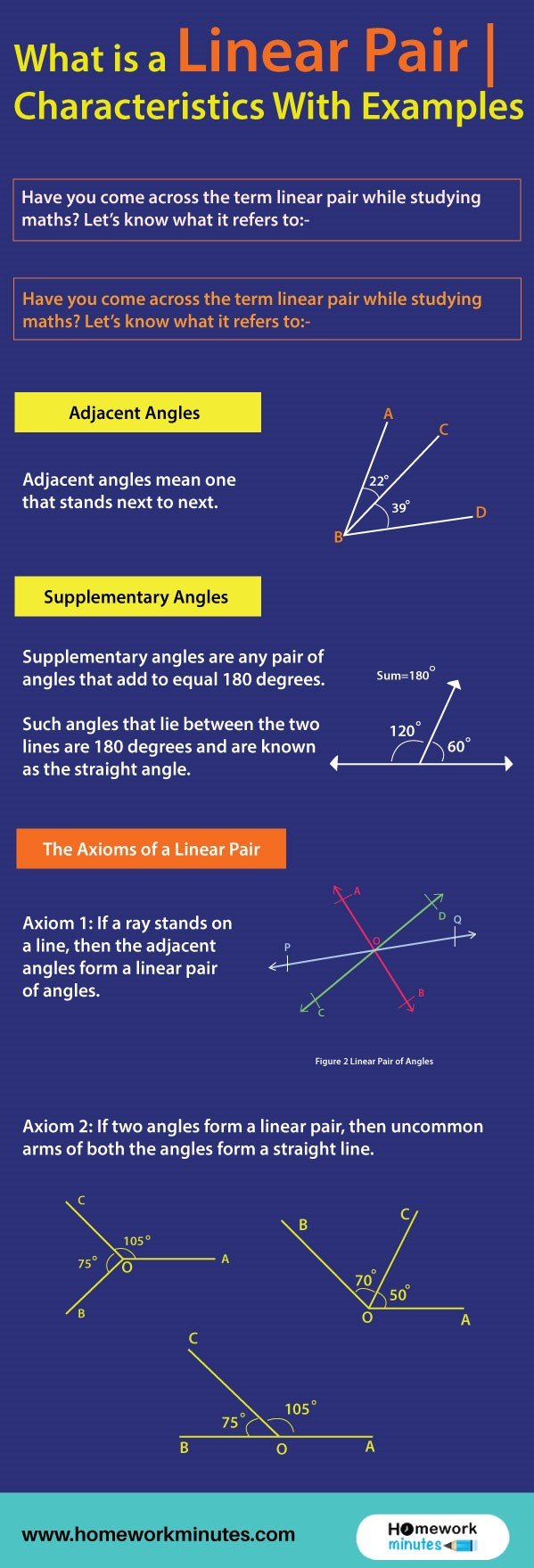You might not be a mathematics enthusiast, and the complex questions would rather turn you nuts. But, there are still some topics that you can find interesting and have a real-time example in your life as well. One such term is a linear pair. Do you know what is a linear pair, and what is its purpose? Let’s know what it refers to. Here are the main characteristics of a linear pair and examples of things that you see around you.
Linear pairs are two angles that stand adjacent (i.e., share a leg) and supplementary (add up to 180°) to each other.
Adjacent Angles
Adjacent angles mean one that stands next to next.
Supplementary Angles
Supplementary angles are any pair of angles that add to equal 180 degrees.
Such angles that lie between the two lines are 180 degrees and are known as the straight angle.
To get pro at calculations, also read:
COVID 19: Learn How to Solve Math Problems Fast
The Axioms of a Linear Pair
Axiom 1: If a ray stands on a line, then the adjacent angles form a linear pair of angles.
Axiom 2: If two angles form a linear pair, then uncommon arms of both the angles form a straight line.
Examples of a Linear Pair As Seen in Real Life
- A Ladder Against the Wall
While a ladder rests against the wall, the ‘angle A’ formed by placing the ladder against the wall is adjacent to ‘Angle B’. Both the angles form a common vertex, making the sum total of 180 degrees.
- Clock Hands
Another example where a linear pair is seen refers to the clock hands. In this example, the angle A and B formed by the clock hands have a common vertex to them and makes the sum total of 180 degrees.
- Pizza Slices
The third example of a real-time linear pair is that of a pizza slice. But isn’t it amusing that a mathematics student shall start measuring the linear angles instead of eating the pizza slice? That must make you laugh out loud. But, the fact is that even the Angles A and B in a pizza slice have a common vertex to it and makes the sum total of 180 degrees, hence a linear pair.
- Scissors
If you keep a scissor open, the flanks of the scissor will be adjacent to each other, shall have a common vertex ‘O’, and will form an angle of 180 degrees.
- Justice Balance
Imagine watching a movie, and instead of the court proceedings, you direct your attention to justice balance and shout out loud, “Oh man! Another linear pair”. Although there would be silent claps in the theatre, you’d receive naggings from your father. However, the crux of the matter is linear pair is even in the justice balance. The angles A and B of the balance have a common central vertex and forms 180 degrees.
If you need help with solving your complex mathematics equations, get instant online assignment help from the top experts at Homework Minutes. Our professionals make even the most boring and hard topics easy for you.


